Plant walls: Vertical planting for beauty and food
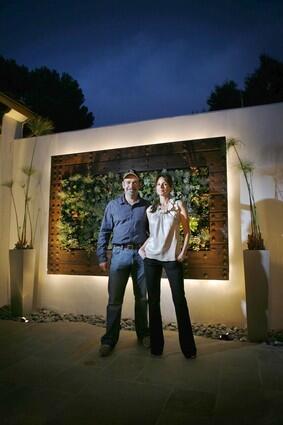
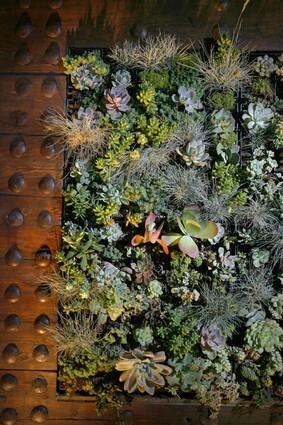
Horvat treated the walnut frame with Penofin wood finish to make it more durable. Edges were lined with copper flashing to further protect the wood. Then the artist, the homeowner and contractor John Harwood arranged the flora, placing more than 300 1-inch plants $1 each from
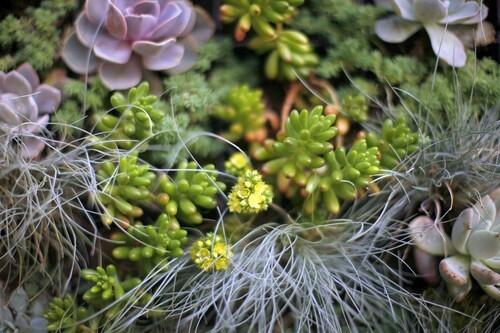
Tufts of blue fescue play off green sedum in the living wall. An irrigation line installed at the top of the door drizzles water down to the plants below. LEDs placed behind the frame give it a three-dimensional look at night like it is levitating, Horvat said. The completed piece weathered recent rains just fine, and the wall is a low-maintenance living artwork that will require watering just once a week. (Jay L. Clendenin / Los Angeles Times)
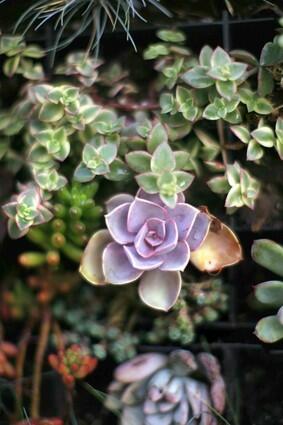
An echeveria in the center of frame stands out from the living collage. If the plants get too large, you can tear them out or break them off and replant them elsewhere, Horvat said. Thomas is pleased with the result and loves watching the creation grow. It changes every day, she said. (Jay L. Clendenin / Los Angeles Times)
Advertisement
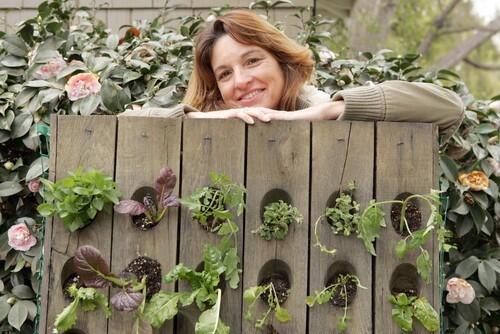
For a different type of living wall, check out the edible wall of lettuces, arugula, Swiss chard, mustard, strawberries and herbs created by Anne Phillips of the landscape design and maintenance firm Go Green Gardeners. Phillips wall uses a French riddling rack, boards with slanted holes in which fermenting bottles of sparkling wine were perched nearly upside down, so yeast could collect in the neck and be removed. Instead of bottles, seedlings go into the holes of Phillips rack, which is about 2.5 feet wide and nearly 5 feet tall. (Stefano Paltera / For the Times)
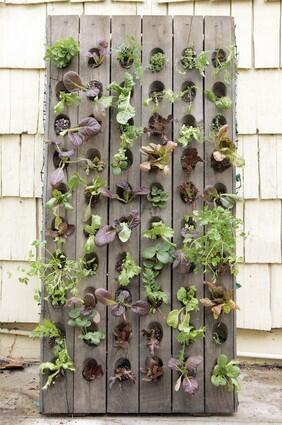
The result is a salad garden that could thrive on a deck or patio. To plant the rack, the designer started at the bottom row, inserting plants from the rear. She wrapped the backside of each plant with coconut coir fiber, the kind typically used to line hanging baskets, and then packed dirt around the roots. (Stefano Paltera / For the Times)
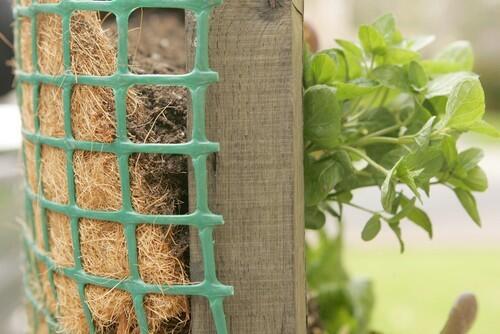
The fiber is held in place with several widths of green plastic fencing. This flexible material works well, Phillips says, because it holds in the coir and the soil but comes off easily to change out soil or plants. Phillips waters her wall by hand, but she says it would be easy to insert drip irrigation into the backside during construction. (Stefano Paltera / For the Times)
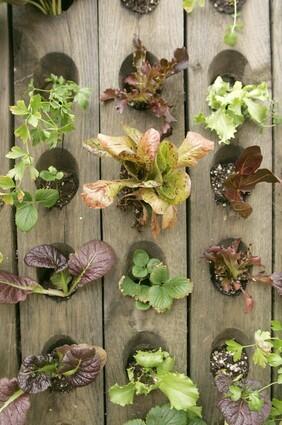
Harvest the greens leaf by leaf, Phillips says, and the plantings will last all season. When the time comes, simply disassemble the back and replace the annuals, leaving the perennial strawberries and herbs. Not all plants work in this kind of setup, Phillips says. Zucchini, for example, gets too big, she says. This spring the designer is testing small-scale cherry tomato plants. (Stefano Paltera / For the Times)



